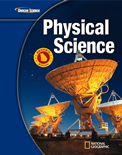1 <a onClick="window.open('/olcweb/cgi/pluginpop.cgi?it=jpg::::/sites/dl/free/0078785337/193821/612_586_1a.jpg','popWin', 'width=NaN,height=NaN,resizable,scrollbars');" href="#"><img valign="absmiddle" height="16" width="16" border="0" src="/olcweb/styles/shared/linkicons/image.gif"> (9.0K)</a> <a onClick="window.open('/olcweb/cgi/pluginpop.cgi?it=jpg::::/sites/dl/free/0078785337/193821/612_586_1b.jpg','popWin', 'width=NaN,height=NaN,resizable,scrollbars');" href="#"><img valign="absmiddle" height="16" width="16" border="0" src="/olcweb/styles/shared/linkicons/image.gif"> (8.0K)</a>
A) bonding of metal atoms B) allotropes of carbon C) isotopes of carbon D) two different elements 2 A) alkaline earth metals B) alkali metals C) lanthanides D) transition metals 3 A) The number of neutrons and the number of protons decrease. B) Only the number of protons decreases. C) Only the number of neutrons decreases. D) The number of protons increases and the number of neutrons decreases. 4 <a onClick="window.open('/olcweb/cgi/pluginpop.cgi?it=gif::::/sites/dl/free/0078785337/193821/612_598_q4_q5.gif','popWin', 'width=NaN,height=NaN,resizable,scrollbars');" href="#"><img valign="absmiddle" height="16" width="16" border="0" src="/olcweb/styles/shared/linkicons/image.gif"> (4.0K)</a>
A) actinides B) lanthanides C) metalloids D) transition metals 5 <a onClick="window.open('/olcweb/cgi/pluginpop.cgi?it=gif::::/sites/dl/free/0078785337/193821/612_598_q4_q5.gif','popWin', 'width=NaN,height=NaN,resizable,scrollbars');" href="#"><img valign="absmiddle" height="16" width="16" border="0" src="/olcweb/styles/shared/linkicons/image.gif"> (4.0K)</a>
A) batteries. B) lanthanides. C) jewelry. D) steel. 6 <a onClick="window.open('/olcweb/cgi/pluginpop.cgi?it=gif::::/sites/dl/free/0078785337/193821/612_598_q6_q7.gif','popWin', 'width=NaN,height=NaN,resizable,scrollbars');" href="#"><img valign="absmiddle" height="16" width="16" border="0" src="/olcweb/styles/shared/linkicons/image.gif"> (5.0K)</a>
A) oxygen B) nitrogen C) calcium D) carbon 7 <a onClick="window.open('/olcweb/cgi/pluginpop.cgi?it=gif::::/sites/dl/free/0078785337/193821/612_598_q6_q7.gif','popWin', 'width=NaN,height=NaN,resizable,scrollbars');" href="#"><img valign="absmiddle" height="16" width="16" border="0" src="/olcweb/styles/shared/linkicons/image.gif"> (5.0K)</a>
A) 67% B) 80% C) 100% D) 98% 8 A) They have both radioactive and non-radioactive isotopes. B) Some of them are very stable. C) The are not obtained from natural sources. D) They are responsible for the radioactivity observed in uranium mines. 9 A) two oxygen atoms. B) a nitrogen atom and two oxygen atoms. C) three oxygen atoms. D) a sulfur atom and two oxygen atoms. 10 A) aluminum. B) carbon. C) tin. D) silicon.
















